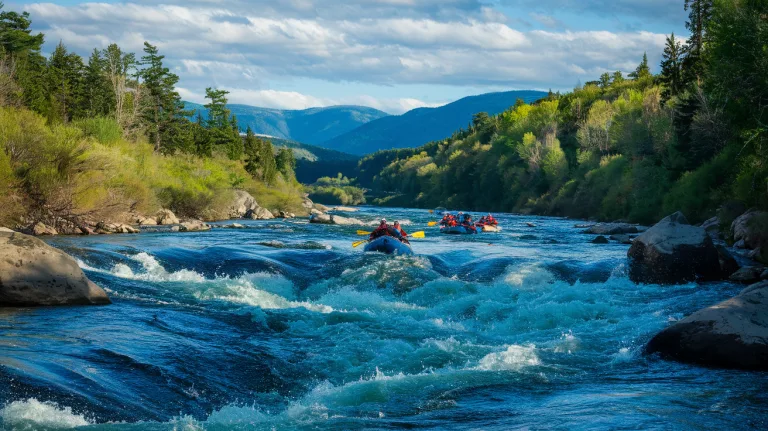Historic Hiking Trails: Walk Through Time In These Iconic Locales
In “Historic Hiking Trails: Walk Through Time In These Iconic Locales,” you’ll embark on a journey through some of the most awe-inspiring locations that are steeped in rich history. These trails offer more than just a physical challenge; they provide an opportunity to connect with the past and immerse yourself in the stories and legends of the land. From the rugged cliffs of the Appalachian Trail to the ancient ruins along the Inca Trail, each step will transport you to a different era, leaving you with a profound sense of awe and wonder. Lace up your hiking boots, grab your backpack, and get ready to walk through time on these legendary paths. Historic Hiking Trails: Walk Through Time in These Iconic Locales
The Appalachian Trail
Its Historical Significance
The Appalachian Trail, stretching over 2,190 miles from Georgia to Maine, is not only a beloved outdoor adventure for hikers, but it also holds immense historical significance. Constructed in the early 20th century, the trail was designed to preserve the natural beauty of the Appalachian Mountains and provide a scenic path for those seeking a connection with nature. The Appalachian Trail Conservancy, established in 1925, has played a crucial role in maintaining and protecting this historic trail, ensuring its legacy for future generations.
Specific Sections of the Trail Worth a Visit
While the entire Appalachian Trail offers breathtaking views and serene landscapes, there are certain sections that stand out and are worth a visit. Whether you’re a seasoned hiker or a beginner, you can tailor your experience to your skill level and time constraints.
One such section is the Great Smoky Mountains National Park in Tennessee and North Carolina. With its diverse wildlife, stunning waterfalls, and panoramic vistas, this portion of the trail is a must-see. Another noteworthy section is the Shenandoah National Park in Virginia, known for its picturesque meadows and vibrant fall foliage.
Ideal Times for Hiking
The Appalachian Trail accommodates hikers throughout the year, but the best time to embark on an unforgettable adventure depends on personal preference and weather conditions. Spring, from March to May, offers mild temperatures and blooming wildflowers. Summer, from June to August, provides longer daylight hours but can be hot and humid. Fall, from September to November, treats hikers to a vibrant tapestry of autumn colors. Winter, from December to February, offers a unique experience of snow-covered landscapes, but it requires specialized gear and hiking skills.
The Inca Trail
Background and Significance
The Inca Trail, located in Peru, holds immense historical and cultural significance. Originally constructed by the Inca Empire in the 15th century, this trail served as a communication network between various cities and archaeological sites. Today, it is a popular trek that leads adventurous hikers to the majestic ancient ruins of Machu Picchu.
Highlight: Machu Picchu
The highlight of the Inca Trail is undoubtedly the awe-inspiring Machu Picchu. This UNESCO World Heritage site is a testament to the architectural and engineering prowess of the Inca civilization. Perched high in the Andes Mountains, Machu Picchu offers a glimpse into the rich history and mystique of the Inca Empire. The sunrise from the Sun Gate, overlooking the ruins, is a breathtaking sight that leaves hikers in awe.
Planning a Trek: Tips and Preparation
Embarking on the Inca Trail requires careful planning and preparation to ensure a smooth and enjoyable trek. It is essential to obtain permits in advance, as the number of visitors allowed on the trail is limited. Packing essentials such as sturdy hiking boots, comfortable clothing, a reliable backpack, and plenty of water is crucial. Acclimatization to the high altitude is also necessary, so spending a few days in Cusco before starting the trek is recommended. Hiring a reputable guide or joining a guided tour can enhance the experience and provide valuable insights into the history and culture of the region.
The Great Wall of China
An Overview of Its History
The Great Wall of China, a UNESCO World Heritage site, is an iconic symbol of China’s history and civilization. Originally built to serve as a defense mechanism against invasions, the wall stretches over 13,000 miles and spans several dynasties. It is a testament to the architectural brilliance and engineering feats of ancient China.
Hiking Paths to Explore
While the entire Great Wall is an incredible feat of human ingenuity, certain sections are particularly popular among hikers. The Badaling section, located near Beijing, is the most accessible and well-preserved portion of the wall, attracting millions of tourists each year. For those seeking a more authentic and less crowded experience, the Jinshanling and Simatai sections are ideal choices. These sections offer panoramic views, rugged terrain, and an opportunity to witness the wall in its original state.
Travel Tips and Necessities
When planning a hike along the Great Wall of China, it is important to consider the weather and the level of physical fitness required for each section. Spring and autumn are often considered the best times to visit, as the weather is mild and pleasant. Summer can be hot and crowded, while winter brings cold temperatures and snow.
Hikers should come prepared with sturdy hiking boots, comfortable clothing, sunscreen, and ample water. Engaging a local guide or joining a guided tour can provide valuable insights into the history and culture of the wall, ensuring a memorable and enriching experience.
Cinque Terre, Italy
A Highlight on Its History
Cinque Terre, a cluster of five picturesque fishing villages on the Italian Riviera, is not only a visually stunning destination but also steeped in rich history. Dating back to the medieval era, these villages were established as trading ports along the Ligurian coast. The colorful houses, terraced vineyards, and ancient trails that connect the villages make Cinque Terre a unique hiking experience.
What to Expect While Hiking
Hiking through the Cinque Terre trails offers breathtaking views of the sparkling Mediterranean Sea, terraced vineyards, and charming villages perched on cliffs. The trails are well-maintained and vary in difficulty, allowing hikers of all skill levels to enjoy the natural beauty of the area. Along the way, hikers can savor delectable local cuisine, such as fresh seafood and pesto, and immerse themselves in the vibrant culture of the region.
Sightseeing and Other Attractions
In addition to hiking, Cinque Terre offers a myriad of sightseeing opportunities. Exploring the narrow alleys of the villages, visiting centuries-old churches, and relaxing on the sandy beaches are just a few of the activities that await visitors. Boat tours along the coast provide a unique perspective and showcase the stunning cliffs and colorful houses from a different vantage point.
Pacific Crest Trail
Its Role and History
The Pacific Crest Trail, stretching over 2,650 miles from the Mexican border to the Canadian border, is an iconic hiking trail that traverses the western United States. Built over several years by volunteers and trail organizations, the Pacific Crest Trail offers a unique opportunity to immerse oneself in the diverse landscapes of California, Oregon, and Washington.
Significant Sections to Traverse
While hiking the entire Pacific Crest Trail is a monumental undertaking, there are specific sections that are particularly noteworthy. The beauty of the Sierra Nevada mountains, with their towering peaks and serene alpine lakes, attracts hikers from all over the world. Another stunning section is the Columbia River Gorge, where hikers can experience the grandeur of waterfalls, lush forests, and breathtaking vistas.
Best Time to Plan a Hike
The Pacific Crest Trail offers different experiences throughout the year, depending on the section and the season. Spring and early summer are optimal for hiking in the southern sections, as the weather is mild, and wildflowers are in full bloom. Late summer and early fall are ideal for hiking in the northern sections, as the snow has melted, and the weather is cooler. It is crucial to research trail conditions and plan accordingly, as certain sections may close due to wildfires or other environmental factors.
The Camino de Santiago
Historical Background
The Camino de Santiago, also known as the Way of St. James, is a historic pilgrimage trail that has been traveled for centuries. Originally a religious journey to the Cathedral of Santiago de Compostela in northern Spain, the Camino now attracts hikers from all walks of life seeking spiritual and personal growth.
Trek Highlights to Look Forward To
The Camino de Santiago offers a remarkable journey filled with diverse landscapes, historic towns, and cultural encounters. Hikers can expect to traverse rolling hills, lush forests, and picturesque vineyards as they make their way to the final destination. Along the way, pilgrims have the opportunity to visit charming medieval villages, ancient monasteries, and awe-inspiring cathedrals. The camaraderie among fellow pilgrims and the sense of accomplishment upon reaching Santiago de Compostela are truly transformative experiences.
Practical Tips for First-Time Hikers
For those embarking on their first Camino de Santiago adventure, it is essential to plan and prepare adequately. Choosing the right route that suits your physical fitness and time constraints is crucial. Packing lightweight and durable equipment, comfortable footwear, and breathable clothing will help ensure a comfortable journey. Additionally, taking breaks, staying hydrated, and listening to your body’s needs are essential for an enjoyable and safe experience.
The Via Dinarica
Unraveling Its History
The Via Dinarica, a long-distance trail spanning the Balkan Peninsula, offers a unique journey through diverse landscapes, cultures, and histories. This trail follows the natural mountain range known as the Dinaric Alps, which stretches through Slovenia, Croatia, Bosnia and Herzegovina, Montenegro, Albania, Kosovo, and Serbia.
Points of Interest Along the Trail
The Via Dinarica provides hikers with a wealth of fascinating points of interest to explore. From the heart of Slovenia’s Julian Alps to the rugged peaks of Montenegro’s Durmitor National Park, hikers can encounter stunning alpine landscapes and crystal-clear lakes. The historic towns and cities along the trail, such as Sarajevo and Kotor, offer glimpses into the region’s complex history and vibrant culture.
Essentials for a Trek to Remember
When embarking on the Via Dinarica, it is important to be well-equipped and prepared for the challenges of the trail. Sturdy hiking boots, lightweight and waterproof clothing, a reliable tent, and a sleeping bag suitable for varying weather conditions are essential. It is also advisable to carry ample food supplies, as there are sections of the trail that are remote and may not offer easy access to provisions. Respecting local customs, adhering to trail regulations, and camping responsibly are crucial for preserving the pristine beauty of the area.
The Larapinta Trail
Its History and Significance
The Larapinta Trail, located in the rugged Australian Outback, is a wilderness trek that showcases the unique natural wonders and cultural heritage of the region. Stretching for 139 miles through the West MacDonnell Ranges, this trail offers hikers an opportunity to immerse themselves in the ancient landscapes and stories of the Indigenous Australians.
Key Spots to Visit
While hiking the Larapinta Trail, there are several key spots that stand out and should not be missed. The stunning red sandstone cliffs of the Finke Gorge National Park and the dramatic gorges of Ormiston Pound are just a taste of the breathtaking scenery along the trail. The ancient rock art sites, such as the one at Emily Gap, provide a glimpse into the rich cultural heritage of the Arrernte people. The rugged beauty and solitude of the Larapinta Trail make it a truly memorable and transformative experience.
Preparations for an Auspicious Trek
Given the remote and challenging nature of the Larapinta Trail, thorough preparations are essential for a successful trek. It is important to research the trail, understand its difficulty level, and assess your own physical fitness. Adequate water supply, high-quality camping gear, and a reliable means of communication are crucial for a safe journey. It is also recommended to acquaint oneself with the local wildlife and adhere to Leave No Trace principles to preserve the delicate ecosystem of the Outback.
Te Araroa in New Zealand
Historical Insights
Te Araroa, New Zealand’s long-distance trail, showcases the country’s stunning landscapes, from rugged coastlines to majestic mountains. This trail, completed in 2011, is not only a challenging adventure for hikers but also an opportunity to learn about the rich cultural heritage of the Māori people.
Trail Highlights and Scenic Spots
Te Araroa offers a plethora of trail highlights and scenic spots that should not be missed. The stunning beaches of the Northland region, such as the famous Ninety Mile Beach, provide an opportunity for hikers to cool off in the ocean after a long day of trekking. The Tongariro Alpine Crossing, with its otherworldly volcanic landscapes and panoramic views, is a must-see for nature enthusiasts. The lush forests of the South Island, including the Fiordland National Park and the Canterbury region, offer a serene and picturesque hiking experience.
Trekking Tips and Suggestions
Hiking Te Araroa requires careful planning and consideration of various factors. With its challenging terrain, changeable weather conditions, and remote sections, hikers should be well-prepared and equipped. It is important to have a good understanding of navigation skills and carry appropriate maps and GPS devices. Complying with the Department of Conservation regulations, practicing responsible camping, and respecting the cultural heritage of the Māori people are essential for a successful and respectful journey.
The Jordan Trail
Discover Its History
The Jordan Trail, a long-distance hiking route that traverses the entire country of Jordan, provides a unique opportunity to explore the rich history and stunning natural beauty of the region. This trail follows ancient trading and pilgrimage routes, offering hikers an immersive experience in the land of legends and biblical tales.
Best Sections to Trek
While the entire Jordan Trail offers a diverse range of landscapes, there are certain sections that are particularly recommended for hikers. The Dana to Petra section, often referred to as the “classic” or “core” section, takes hikers through rugged canyons, ancient archaeological sites, and ends with the magnificent city of Petra. The Wadi Rum section, known for its Martian-like landscapes and Bedouin hospitality, is also a favorite among trekkers.
Pro Tips for a Rewarding Journey
When planning a trek along the Jordan Trail, there are several pro tips that can enhance the experience. It is recommended to hike during the cooler months, from October to April, as the summer temperatures can be extremely hot. It is also essential to carry ample water, as water sources along the trail can be scarce. Engaging local guides or joining organized tours can provide valuable insights into the history, culture, and geology of the region, as well as ensure a safe and rewarding journey.
By exploring these historic hiking trails, whether in the Appalachian Mountains, the Andes, or the ancient landscapes of Jordan, you have the opportunity to walk through time, immerse yourself in stunning natural beauty, and connect with the rich history and heritage of these iconic locales. Happy hiking!






